The promise of self-driving cars has been one of the most thrilling technological developments in recent years, and Tesla has been at the forefront of this revolution with its Autopilot and Full Self-Driving (FSD) features. While Tesla's Autopilot and FSD have garnered praise for their impressive capabilities, a crucial question remains: Can a Tesla genuinely drive itself in inclement or poor weather conditions?
Tesla's Autopilot and Comprehensive Self-Driving Features
Before discussing the future of Tesla's efficacy in inclement weather, let's examine the Tesla Autopilot and Full Self-Driving features:
-
Autopilot is a sophisticated driver assistance system developed by Tesla. It incorporates adaptive cruise control, lane-keeping assistance, and lane-changing assistance. It has the ability to control acceleration, braking, and steering under specific conditions, making highway travel more comfortable.

- Full Self-Driving (FSD): FSD is Tesla's most sophisticated driver-assistance package, expanding upon Autopilot's capabilities. FSD includes features such as Navigate on Autopilot, which enables the vehicle to change lanes, take exits from highways, and more automatically. In addition, it features Smart Summon, which allows the vehicle to navigate parking lots to find you.
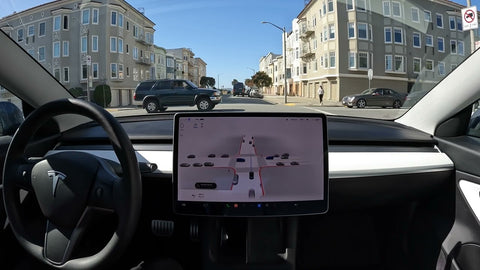
Autopilot is less capable of handling inclement weather than FSD. FSD employs a neural network to analyze sensor data and make driving decisions. This neural network is trained on a massive dataset of traffic data, including data from inclement weather.
As a consequence, FSD the car can perceive the surrounding environment more accurately and make more informed driving decisions in adverse weather conditions. However, even FSD is not yet entirely autonomous in all conditions.
Autopilot and Weather Conditions for Tesla
While Tesla's Autopilot and FSD systems in autonomous vehicles are remarkable in many respects, their performance in inclement weather has limitations:
Heavy Rain: Tesla's Autopilot is generally reliable in moderate rain, but its efficacy next lane keep can be diminished in heavy rain. The vehicle's cameras and sensors may have trouble seeing plainly, impairing lane-keeping and object detection.
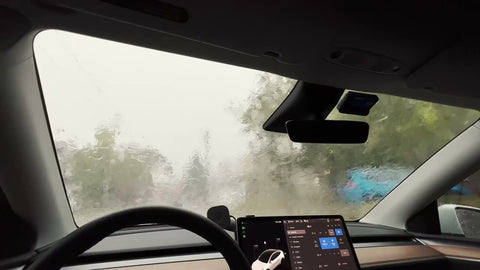
Snow and Ice: Snow and icy conditions can present challenges for Autopilot on the Tesla Model S. The vehicle may have difficulty detecting road markings and other signs and may struggle with traction and stability. In such conditions, it is essential to exercise extreme caution and, if necessary, disable the Autopilot.
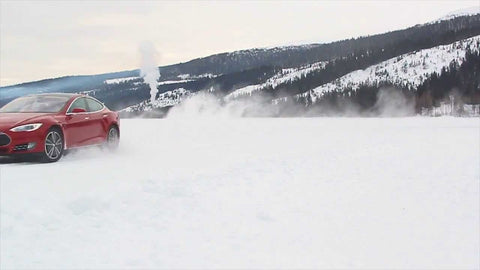
Dense fog can reduce visibility, impacting the efficacy of the Autopilot. Reduced camera and sensor visibility can make effective navigation difficult for the system.
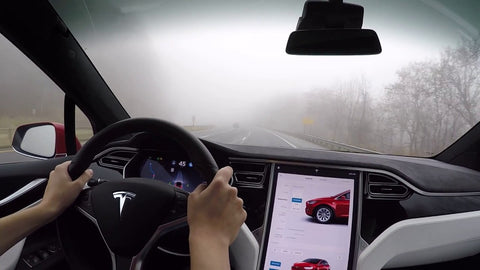
Limited Autonomous Driving: It is important to note that as of my most recent knowledge update in 2022, Tesla's Full Self-Driving remains a "Full Self-Driving Capability," indicating it is not fully autonomous. Regardless of weather conditions, drivers must remain attentive, maintain their hands on the steering wheel, and be prepared to take control of the vehicle at any time.
When it rains, water particles can obscure the cameras' vision, making it difficult for the system to see the road and other vehicles. Additionally, snow can obscure the cameras and radar sensors, and fog can reduce visibility.
Despite these obstacles, Tesla's self-driving features can function in certain adverse weather conditions. For instance, Autopilot can be used in light rain or snow, but the driver must remain vigilant and be prepared to assume control of the vehicle at any moment.
Tesla's Constant Advancement
Tesla's software and neural networks that enable the Autopilot and FSD features are continuously updated. These updates seek to improve the performance of the systems, including their capacity to navigate inclement weather. To take advantage of these enhancements, Tesla owners must keep their vehicles updated with the most recent software releases.
Security First
Despite the fact that Tesla's Autopilot and FSD features are impressive, it is essential to remember that they are not a replacement for a vigilant human driver, particularly in adverse weather conditions. Safety should always be the utmost concern when operating any vehicle, and pedestrians and drivers should exercise caution, maintain control of their vehicles, and be prepared to take over in adverse weather conditions.

Here are some recommendations for using Tesla's self-driving features in inclement weather:
Maintain heightened vigilance and be prepared to assume control of the vehicle at any moment.
If feasible, use Autopilot instead of FSD. FSD is better equipped to handle inclement weather, but it is still in development and may not always function as expected.
Drive more slowly than your normal driving and in adverse weather conditions. This will provide you with more time to respond to unforeseen events.
Maintain a secure distance from other automobiles.
Recognize the limitations of Tesla's autonomous driving features. Use them only in conditions in which you would feel comfortable driving yourself.
Does Tesla Autopilot Work in Harsh Conditions?
Autopilot is an extraordinary driver assistance system from Tesla, but it has limitations in severe weather conditions. Autopilot relies on a collection of sensors, cameras, and radar to navigate and make decisions, and inclement or bad weather often can hinder its performance.
Auto Lane Change
Automatic Lane Shift Auto Lane Change is one of the convenient Autopilot features offered by Tesla. This feature allows the vehicle to change lanes automatically on the highway when the driver initiates a lane change by using the turn signal. Auto Lane Change makes traveling on the highway more convenient and comfortable.
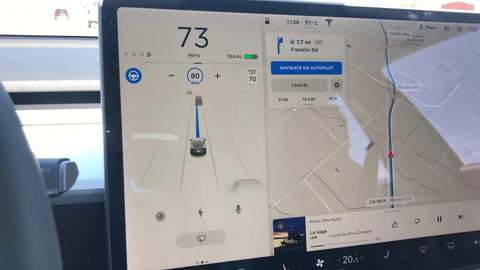
Tesla drivers can implement Auto Lane Change by following these steps:
- While using Autopilot and traveling on a highway, activate the turn signal in the desired direction. The vehicle will then assess its surroundings and initiate the lane change if it is secure to do so.
- Auto Lane Change makes highway travel more efficient by facilitating the passing of slower vehicles and facilitating the maintenance of a constant speed.
- Even while using features such as Auto Lane Change, it is imperative that the driver remain attentive and prepared to assume control of the vehicle at any time.
Stop Light and Stop Sign Warning
Warning for Stop Light and Stop Signs As part of its Full Self-Driving (FSD) suite, Tesla's Stop Light and Stop Sign Warning is a valuable safety feature. This feature is intended to warn the motorist if he or she is about to run a red light or stop sign. Here is how it operates:
- When the Tesla approaches a stop sign or a red traffic light, its sensors and cameras will identify the traffic signal.
- If the vehicle detects that the driver is not slowing down sufficiently for the signal, it will issue a visual and audible warning to prompt the driver to take corrective action.
- This feature is a beneficial safety net that reminds the driver to obey traffic laws and maintain vigilance, even when Autopilot or FSD is engaged.
Autopilot and related Tesla features are impressive, but they cannot supplant a responsible and vigilant driver. Understanding how these features function and their limitations on human drivers is essential for ensuring road safety. Traffic-aware cruise control and automatic emergency braking are key components of today's driver-assist systems, paving the way for the future of self-driving vehicles.
These advanced technologies use sensors to maintain safe following distances and adapt to varying driving conditions, especially on high-speed roads. These innovations enable self-driving vehicles to navigate highways and complex driving scenarios with greater precision, all while maintaining appropriate distances from other vehicles, often measured in car lengths.
 :
:  :
: 




















